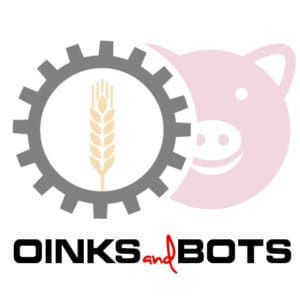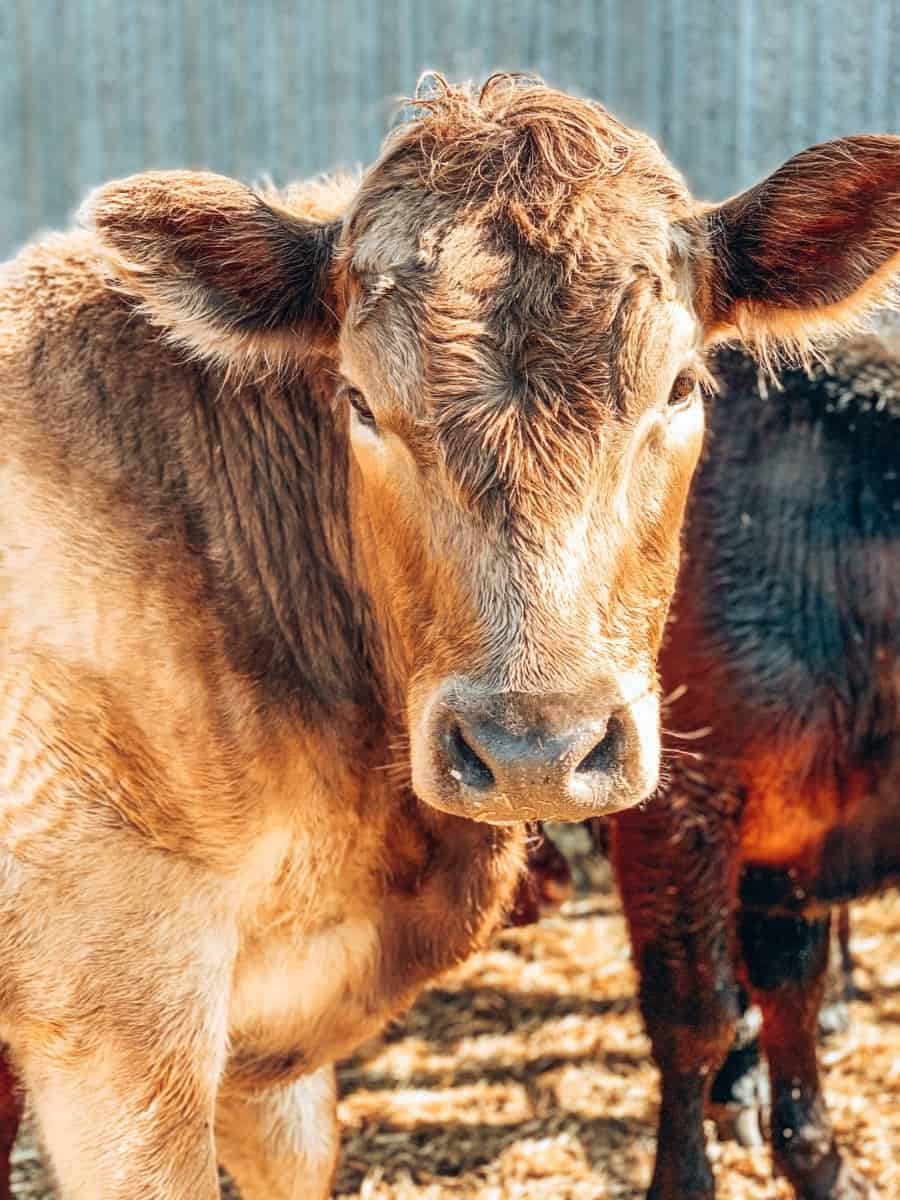Normally we would be looking at two main groups for the best cattle feed for both beef and dairy cows in the article but in this case, we will be separating them as they have different requirements.
The quantities needed for your specific herd will vary from location to location. It can even vary from field to field. This can be an important factor when looking at expanding your farming enterprise.
This article will look at what your herd should be consuming and tips to cover dietary restrictions found across the world. Like sheep, cattle are ruminant feeders. This will factor massively into their diet.
Also as a disclaimer, though I have worked with vets in the past and have had family members farm dairy cows, I am not an expert and all numbers are general. If ever in doubt contact your local large animal practice and get specific numbers for your herd. But this article should serve as a rough guideline.
Cattle Digestive System
Before we delve into what it is that cattle need for their diet, we need to make sure we understand how cattle are able to digest food. As just said, cattle are ruminant feeders. This means they have a large organ in their digestive system that is called a rumen.
This rumen acts as a fermentation tank for the food the cattle consumes. There are bacteria and other micro-organisms that help break this down for your cow. With all this in mind, let’s continue.
Beef Cattle nutrition requirements can be split into 5 sections
- Energy
- Nutrients
- Proteins
- Minerals
- Microminerals
Energy
Cattle are large animals and they therefore need lots of food to maintain their body mass. And to put it in numbers you want your beef herd to be a weight of about 1000 lbs or about 450 kg before sending them off to slaughter.
This means it will very much depend on how much your beef herd weighs on how you finish your herd. (Finishing the term used in the runup to sending your beef herd for slaughter).
This usually takes 12-18 months for a calf to reach this weight. It’s recommended that you use high calorie foods such as grains. This will help your herd put on the weight needed to get up to this critical point.
Nutrients
Like all animals, beef cattle need nutrients to maintaining and keeping their body healthy. There are nutrients needed by beef cattle at different quantities at different parts of their lives. For example, a steer (a neutered male bullock) will have very different needs to a pregnant or lactating cow.
Feedstuffs
Naturally when talking about nutrients, we need to talk about feedstuffs. Feedstuffs are the various different pellets you can feed cattle and we will break this down in further detail for you now.
Roughage
Roughage (think grass, silage or hay) is essentially the bulk of your cattle’s diet. They tend to be high in fibre. This is because they are generally made up of materials called cellulose and hemicellulose. These tend to be only mediocre sources of energy at best.
Grains
Grains (think corn, barley and oats) are usually high in energy and calories. However, with less fibre than the roughage of their diet, your cattle will not be satiated on this diet. And if you try to focus on this part of the diet too much, you run the risk of overfeeding your cattle. These sources tend to be high in protein content, meaning they are important to balance out your roughage diet.
Oilseeds
Oilseeds (think soybeans) are a great supplement and can be used in conjunction with grains to ensure your cattle get enough protein and calories in their diet. Depending on the season it may be advisable to use oilseeds over grains as they may be cheaper.
Proteins
Similar to nutrients, cattle need proteins to make sure that they can maintain body mass. This is particularly important when you are finishing you beef herd. By packing in the fat and protein rich food, you are making sure that they are bulking up as quickly as possible.
As mentioned before, the rumen is important in the cattle digestive tract, this is because a lot of the proteins are digested in the rumen. Those that are not soluble in the rumen are digested in the small intestine.
Minerals
Like sheep and pigs, there are specific minerals needed in larger quantities than others and these are called macrominerals. Such minerals are needed in large quantities because they are essential for body wide functions such as growth, bone function and reproduction. These are salt, calcium, phosphorous, potassium and magnesium.
We will now look at the requirement of beef cows as these are the most vulnerable group. In the below example we will be assuming the cow is 1200 lbs (fully mature) and is producing 20 lbs of milk per day (the average for a healthy beef cow).
Salt
While a beef cow is pregnant, she will need about 0.06%-0.08% of her diet to be salt. This will help the calf to develop properly. When she is lactating (producing milk) she will need a higher amount of salt, 0.1%.
Calcium
As you would imagine, a gestating cow will need a high concentration of calcium. She will need 0.21% of her diet to be calcium. As she begins to lactate, this will shoot up to 0.3%.
A deficiency of calcium can lead to arched backs, tender joints and stiff legs in calves. In lactating cows, it can lead to reduced milk production and weak brittle bones.
Phosphorus
This is a mineral that can be often ignored by new farmers and sometimes even by experienced ones. However, this is just as important as the other macrominerals. In fact, it is often needed in conjunction with calcium as a 2:1 ratio. Your cow will need 0.15% while pregnant and 0.19% while lactating.
A deficiency in phosphorus can lead to similar problems as a lack of calcium. It can also reduce fertility and assuming that you are feeding enough protein and calories to your cows, you will also have poor weaning weights.
Potassium
Potassium is needed to maintain a healthy central nervous system and so in such large creatures, it is needed in large quantities. In a gestating cow you would need 0.6% of the total food to be potassium and when she is lactating for her calf, she would need 0.7%.
If your cow doesn’t get enough potassium can lead to severe muscle weakness and in extreme cases death.
Magnesium
This is an important macromineral as it not only affects bone growth and maintenance, but it is also important for assisting the rumen in digesting the food there. For your gestating cow, you will need 0.12% of your cow’s diet and for when she is lactating, she will need 0.2%.
Lack of magnesium can lead to a metabolic disease called grass tetany. This is a disease that can lead to eventual death and your herd will be most at risk of this when your pastures are growing fastest (usually in Spring).
Microminerals
Cattle need 10 microminerals; iron, manganese, copper, zinc, selenium, cobalt, iodine, chromium, molybdenum and nickel. Of these only 3 are likely to be deficient in a typical pasture diet would be copper, zinc and selenium.
Copper
This is the most common micromineral in beef cattle. Copper is an important micromineral as it helps in the development of growth phases and a defiance can result in infertility, a lowered immune response.
One of the easier ways to determine if your cattle are consuming enough copper is if their pigmentation becomes less intense, for example if a black patch were to fade to red. “Pure” copper (Copper Oxide) is purely absorbed by your cattle so you will need to supplement their diet with compounds such as copper sulphate or organics with copper mixed in.
Zinc
Zinc is important for the production od enzymes in your cattle and they can also contribute towards male fertility in your bulls. Zinc and copper are closely linked and should be in a 3:1 ratio.
Cattle are not good at storing zinc and so supplementation is always a must. Iron is an antagonistic of zinc and so if the ratio of iron becomes 2:1 to zinc, it can drastically reduce zinc absorption rate.
Selenium
Selenium is a very toxic chemical. However, it is vital for beef cattle calving. If there is not enough in the birthing mother’s diet, then this can lead to white muscle disease in the calf. White muscle disease is a muscular degradation that can lead to poor chances of your calves surviving. As it is a toxic element for humans, there are tight regulations on how much you can feed your cattle selenium.
In dry matter it must not exceed 0.3 ppm (parts per million). If you are using a free-choice feeder, you can use up to 120 ppm in a sat-mineral mixture.

